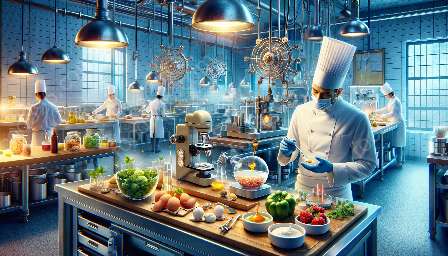Food sensory analysis is a multidisciplinary field that plays a crucial role in ensuring the quality and appeal of food products. It encompasses the evaluation of food attributes such as taste, aroma, texture, and appearance to understand and enhance the sensory experiences of consumers.
The Importance of Sensory Evaluation in Food Quality Assurance
Sensory analysis in the context of food quality assurance involves the systematic and objective assessment of food properties to ensure that they meet specific quality standards and consumer expectations. By employing sensory evaluation techniques, food manufacturers and culinary professionals can gain insights into the sensory characteristics of their products, identify potential areas for improvement, and make informed decisions to enhance overall quality.
Key Aspects of Food Sensory Analysis
Food sensory analysis encompasses various key aspects that contribute to the overall quality and marketability of food products:
- Taste: The taste of a food product is a fundamental sensory attribute that encompasses sweet, sour, salty, bitter, and umami tastes. Through sensory analysis, professionals can evaluate the balance, intensity, and flavor characteristics of food products.
- Aroma: The aroma or odor of a food product significantly influences its perceived flavor. Sensory analysis techniques such as aroma profiling and sensory panels help in assessing the aroma compounds and their impact on sensory perception.
- Texture: The texture of food, including attributes such as crunchiness, tenderness, and mouthfeel, greatly influences the overall eating experience. Texture analysis methods are employed to quantify and optimize the textural properties of food products.
- Appearance: Visual appeal plays a vital role in consumer acceptance of food products. Color, shape, and overall presentation are evaluated through sensory analysis to ensure that they align with consumer preferences and expectations.
Integration with Culinology
Culinology, a fusion of culinary arts and food science, relies heavily on sensory analysis to develop innovative and high-quality food products. By integrating sensory evaluation techniques with culinary creativity and scientific principles, culinologists can create unique flavor profiles, textures, and appearances that resonate with consumers.
Methods and Techniques of Food Sensory Analysis
Several methods and techniques are employed in food sensory analysis to gather objective data and meaningful insights:
- Sensory Panels: Trained sensory panels consisting of individuals capable of discerning and describing sensory attributes are used to conduct sensory evaluations of food products.
- Descriptive Analysis: This method involves trained panelists quantifying and describing the sensory attributes of food products using standardized terminology and reference materials.
- Consumer Testing: Consumer sensory tests involve gathering feedback from target consumers to understand their preferences, likes, and dislikes regarding various sensory attributes.
- Instrumental Analysis: Instrumental methods such as spectrophotometry, rheology, and gas chromatography are utilized to measure specific sensory parameters objectively.
Enhancing Food Product Development and Innovation
Food sensory analysis serves as a cornerstone for driving product development and innovation in the culinary industry. By understanding and leveraging sensory insights, food professionals can create products that not only meet quality standards but also delight consumers with exceptional sensory experiences.
Challenges and Future Trends
While food sensory analysis has revolutionized the way food products are evaluated and developed, it also presents several challenges and opportunities for future advancements:
- Global Sensory Harmonization: Standardizing sensory evaluation methods and terminology globally remains a critical challenge for ensuring consistent sensory assessments across different regions.
- Emerging Sensory Technologies: Advancements in digital olfaction, electronic tongues, and virtual reality sensory simulations are poised to revolutionize the field of sensory analysis, providing new tools for in-depth sensory evaluations.
- Cross-Disciplinary Collaboration: Collaborations between food scientists, sensory experts, and culinary professionals will continue to drive synergies in developing sensory-driven food innovations.
Conclusion
Food sensory analysis is a dynamic field that intersects with food quality assurance and culinology, playing a pivotal role in shaping the sensory landscapes of food products. By embracing sensory evaluation techniques and leveraging sensory insights, the culinary industry can continue to elevate the quality, innovation, and consumer satisfaction of food products.

